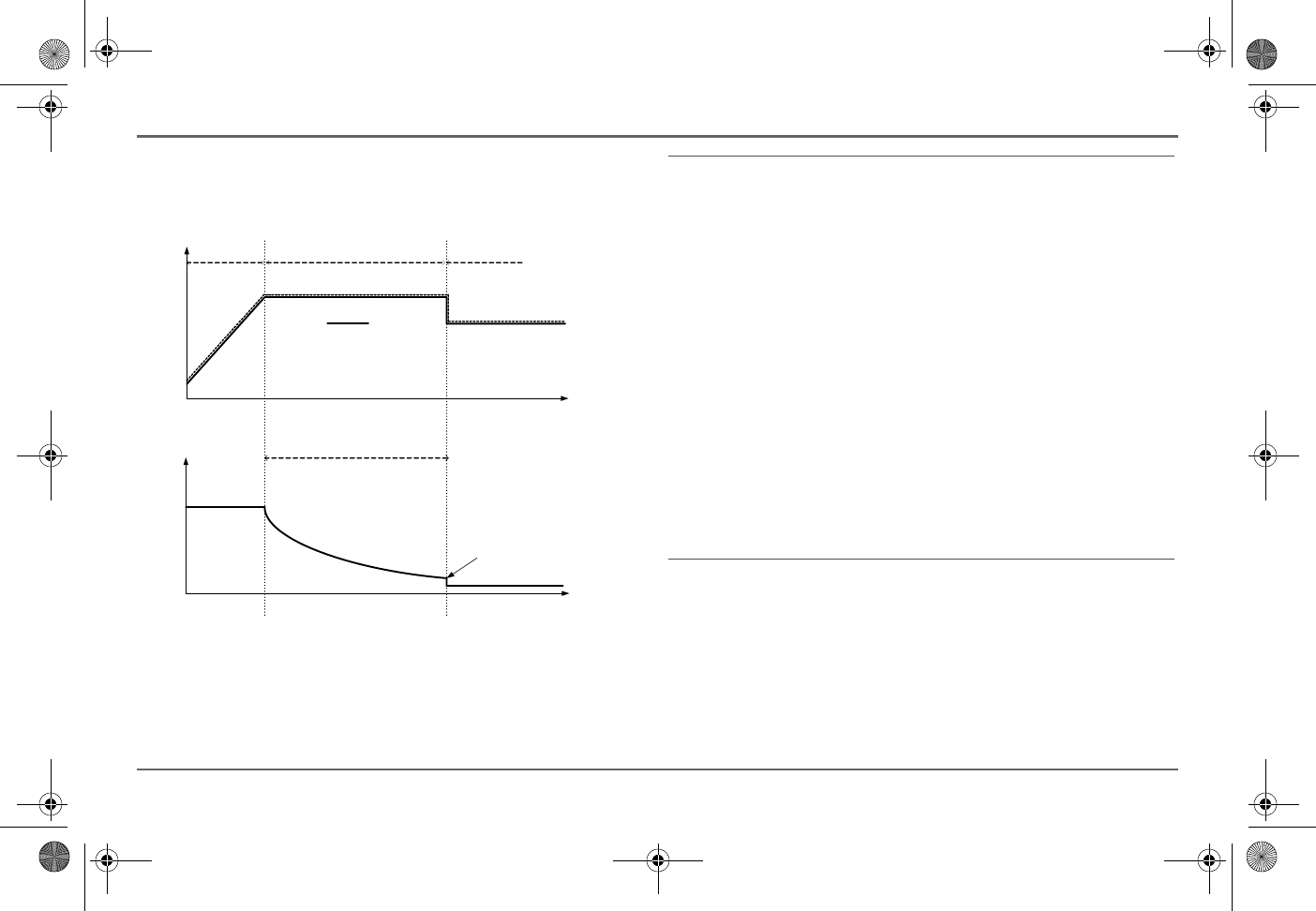
97-0019-01-01 59
Battery Charging Reference
The charging cycle is a multi-stage (three-stage) process. Whenever
qualified AC power is present at the inverter’s input, it passes power
through to the connected load and begins charging the batteries.
Bulk Stage
Bulk charge is the first stage in the charging process and provides the
batteries with a controlled, constant current. Once the battery voltage rises
to the absorption voltage threshold, the charger switches to the absorption
stage.
Figure 32
Three-Stage Battery Charging Cycle
Time
Time
Absorption Voltage
Float Voltage
Max AbsorbTime - Dflt3 hrs
(adjustable 1 min - 8 hrs )
AbsorptionExit Current
Threshold = 2% of
programmed AH capacity
3-Stage Charge
FloatStageAbsorptionStage
BulkStage
Battery
Current
MaxCharge
Rate
Battery
Voltage
NOTE:
When the charge cycle is interrupted, the charger will restart charging at
the beginning of the multi-stage algorithm.
Exit Current Threshold can be effectively disabled by programming the
amp-hour capacity to the minimum. In this case, absorption will only exit
once the Max Absorption timer expires.
Charge current during equalize state (optional state not shown here) is
normally limited to 10% of the programmed amp-hour capacity setting. If
this setting is programmed to the maximum, the charge current during
equalize is instead limited to whatever is programmed for the maximum
current limit of the unit.
Synchronized charge states are active when more than one charging
device is connected in the system via the Xanbus network.
• The first unit (Freedom SW) to enter bulk, causes all other chargers to
enter bulk.
• The first Freedom SW to enter absorption causes all other Freedom
SWs to enter absorption.
• The last Freedom SW ready to exit absorption triggers all Freedom
SWs to exit absorption and exit charge.
Freedom SW 3K2K InvChg Owners Guide.book Page 59 Wednesday, October 9, 2013 1:34 PM
